What is the Internet of Things?
- Transfer
An Introduction to the Internet of Things
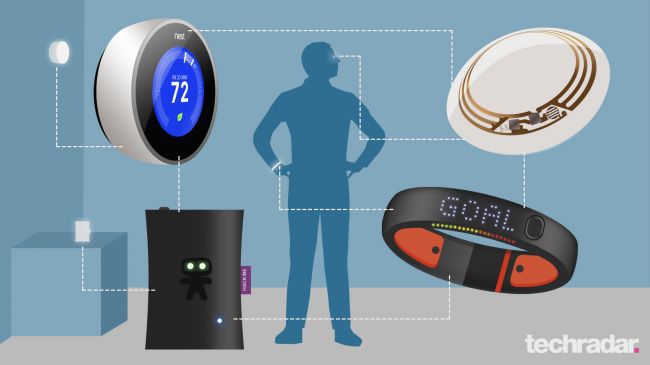
You wake up in the morning, and the sleeping bracelet on your wrist has already recorded how you slept, and uploaded the data to Twitter. The coffee machine received data from Twitter that you woke up and began to brew a morning cup of strong drink for you.
Guided by the data of the same bracelet, the lighting turned on in your bedroom, and a towel began to heat up in the bathroom. When you walked from the bedroom to the kitchen, lamps turned on and off everywhere automatically. A cup of coffee was waiting for you in the kitchen. When you left the house and went to work, a robot vacuum cleaner turned on in the apartment and started cleaning the room, transmitting information about the cleaning process to your phone.
Welcome to a world based on the concept of the Internet of Things. Into a world whose image was largely predetermined by the largest technology companies. In a world that promises to change our lifestyle.
What is the Internet of things?

What is the Internet of Things? As a rule, this term means a combination of inexpensive, energy-efficient processors and physical electronic sensors that integrate into various electrical devices and “communicate” with each other through wireless communication standards.
Electronic sensors can measure absolutely everything, starting from temperature and humidity, and up to pressure, distance, sound strength, light level, gravity, motion, response. Further, all recorded readings by means of installed software can be processed and transmitted over the Internet to other devices.
At the last international consumer electronics fair in Los Angeles, the topic of the Internet of Things was in the limelight. The exhibition was attended by a large number of large and small companies, which over the next year intend to bring to the market a wide variety of devices connected to the Internet. For example, Dyson announced the release this year of a new robot vacuum cleaner called the 360 Eye with a panoramic lens and the ability to control from the phone. Equipped with a Wi-Fi module and created on the basis of the patented Cyclone technology, the vacuum cleaner will be able to send cleaning data to the user's phone.
And how do you like the idea of a coffee machine, the operation of which you can control using the application for a mobile phone? The Danish company Scanomat has developed a stylish TopBrewer machine that allows you to select the type of coffee using an Android or iOS application. If you intend to visit Copenhagen, be sure to check out the TopBrewer Café, which never has a queue, because coffee is ordered and paid using your mobile phone.
Technology accessibility
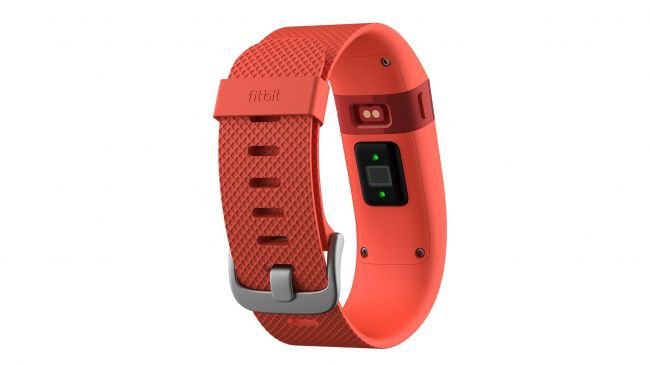
The rapid development of the Internet of Things was due to the continued cost-cutting of technology. Over the past couple of years, we have been continuously observing how the cost of a wide variety of devices is reduced, from 3D printers to smart watches. The cost of the Bluetooth module, which provides wireless connection of devices using the corresponding protocol, has sharply decreased. Today on eBay you can find a Bluetooth adapter that costs less than 70 cents.
Photo sensors built into fitness bracelets and allowing you to determine the pulse cost about 50 cents, and green LEDs are sold at one cent apiece. However, the cost of computing power fell most significantly, which allowed us to embed computer chips in almost every device.
Do-it-yourself devices

Unlike other technological revolutions, the latter so lowered the cost of components that it led to the elimination of traditional barriers to the introduction of new products and companies on the market. At the moment, you only need to understand what the technology of the Internet of Things is, that is, to understand the principles of operation of sensors, processors, wireless networks, cloud computing environments, which form the basis of IW, and have a good idea.
An idea alone will not bring you millions. However, thanks to sites offering direct financing for projects (the so-called crowdfunding), such as Kickstarter and indiegogo, innovations in the Internet of Things can be developed both through the efforts of the technical community and with the participation of rich and influential companies (an example is the LIFX project).
At the end of 2013, Intel’s largest computer chip company entered the DIY market with its first breadboard called Galileo. The Galileo board is equipped with a 32-MHz single-core processor with a clock frequency of 400 MHz, which is called Quark X1000 and is designed specifically for the development of projects in the field of the Internet of Things.
In order to promote the product on the market, Intel planned in 2014 to donate 50,000 boards to various universities around the world. Since then, the company managed to bring to market Galileo 2 board and super thin Edison boards.
$ 3 Wi-Fi Solution
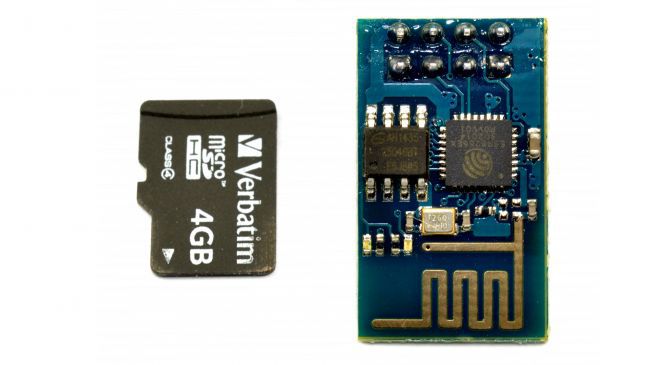
A huge step forward in the field of Wi-Fi technologies was the creation of a tiny chip ESP8266, which was released by the Chinese company Espressif Systems. The peculiarity of this chip is that it contains such a set of elements that will allow you to build a full-fledged Wi-Fi network. At the same time, the module itself costs only 2-3 dollars.
Compared to the cost of Wi-Fi modules of the previous generation, these are mere pennies. At the same time, the ESP8266 continues to support 802.11b / g / n standards at a frequency of 2.4 GHz, i.e. The standards used by your phones and tablets. If you read what this small chip is capable of, you will realize that it really made it possible to revolutionize people's ideas about how and where to deploy a Wi-Fi network. Built-in improved encryption standard, no need for external components or factory settings - it is obvious that all this explains the popularity of the solution among developers.
Not so long ago, the chip was certified by the State Committee on Television, Radio Broadcasting and Communications of the United States. Now that the biggest barrier has been overcome, nothing can prevent the use of this chip on an industrial scale. Already, you can buy an ESP8266 Wi-Fi module on eBay for about $ 3 and use it in conjunction with Arduino-based microprocessor boards to implement your projects.
Bluetooth module HC-06
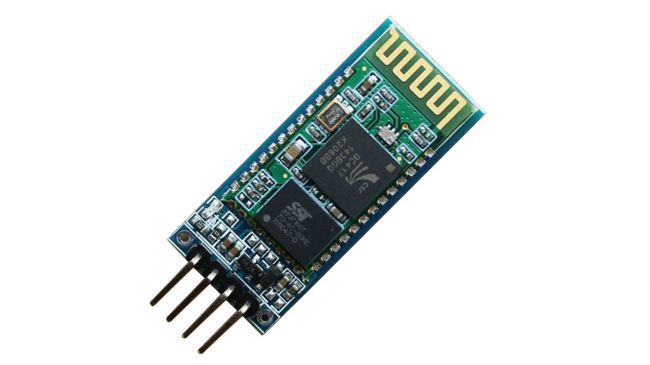
Despite the fact that the ESP8266 module, without a doubt, gave impetus to the development of a whole range of new cheap devices that are directly connected to the Internet, the most common wireless connection is still a Bluetooth-based connection. In particular, the Bluetooth module is used to create various kinds of wearable devices, for example, fitness bracelets, which are abundant in the market.
HC-06 type bluetooth modules are now sold for about $ 4 and they work like a wireless serial port. You can connect the module to any home device. Like standard devices that support Bluetooth technology, the HC-06 module can communicate with any Android or iOS phone or tablet for data transfer.
$ 32 32-bit processor
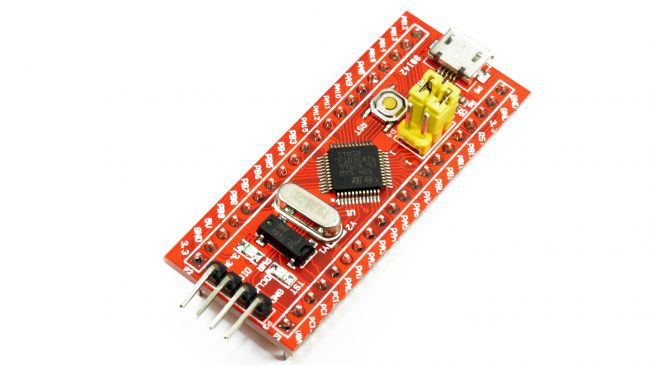
Another novelty on the market is a tiny breadboard equipped with an 72MHz energy-efficient 32-bit STM32F103 ARM Cortex M3 microprocessor, which should become a direct competitor to Intel products. ARM is behind the processor of every iPhone and iPad, as well as 98% of Android devices, due to the incredible popularity of the Cortex A-series
processors . The Cortex M3 processor is often used in smartphones to perform secondary tasks. But it can be used for a number of other needs. While Intel Galileo sells for around $ 74, the tiny STM32F103 is available in online stores for only $ 4.
Open standards
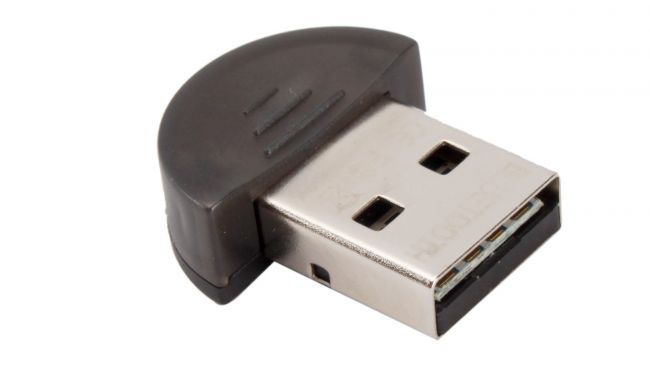
The rapid development of the Internet of Things is starting to face the same problems that hit the revolution in personal computer development in the 1980s. Currently, the problem is not how to bring the product to the market, but how to develop appropriate standards, without which various devices will be just a pile of trash, unable to "communicate" with each other.
A thorough examination requires everything from hardware compatibility to the way data is stored in cloud storage. And before progress goes too far, the market needs to develop appropriate standards.
Number of Standards
Qualcomm is one of the leaders in the market for the production of processors for phones and tablets. It produces Snapdragon chips based on the ARM architecture, which are used in devices such as the Samsung Galaxy S5. The company is also a major player in the Internet of Things market, having once started developing the AllJoyn protocol, which served as the basis for the creation of the AllSeen Alliance.
The alliance was formed in 2013 and already then received the support of major manufacturers of household appliances, such as Electrolux, and also connected Microsoft, LG, Panasonic, Sony, and the industrial giant Bosch to the promotion of the platform. However, soon competing alliances formed other companies wishing to promote their solutions.
For example, the Open Interconnect Consortium (OIC) consortium has become a direct competitor to the AllSeen Alliance. The consortium has the same goals as AllSeen, namely, trying to create synchronization standards for devices that form the Internet of Things, but without using Qualcomm’s AllJoyn protocol.
The OIC Consortium was created in 2014 by giants such as Intel, Samsung and Broadcom, a competitor to Qualcomm. However, soon there was a discord between the participants and in October 2014 Broadcom left the OIC. It was reported that such a decision was caused by disagreements on the protection of intellectual property.
Intel’s largest processor company has also set up a separate Intel Internet of Things Solutions Alliance, which is clearly about to take a more comprehensive approach by promoting brands such as Dell, Hewlett-Packard, Fujitsu, Microsoft, and Oracle.
At this stage, neither the AllSeen alliance nor the OIC consortium make any concessions and seem to be going to let the market choose which of the participants will be the winner. Perhaps we are expecting a repeat of the battle of the 'VHS vs Betamax' standards that broke out on the market in the mid-80s. As they say, all new is well forgotten old ...
Internet of Things in numbers
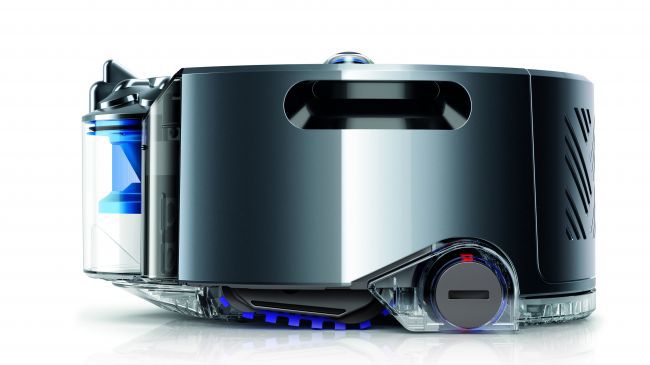
Perhaps for some, the problem of standards may seem like a storm in a glass of water, however, there are many reasons why you need to create and select the best standards as quickly as possible. According to research conducted by Gartner, this year the number of devices and appliances connected to the network will reach 4.9 billion units. By 2020, this figure will increase to 25 billion.
According to forecasts in the near future, the market for the production of products and services related to the field of the Internet of Things will reach $ 263 billion. Gartner’s vice president, Jim Tully, said the whirlwind of cloud, mobile, social and information technology, what he called the Circle of Forces, left most companies with no choice but to turn to the Internet of Things.
In December 2013, Gartner named the manufacturing, healthcare and insurance industries as pioneers in the field of Internet of Things technologies. Manufacturing companies are combining the technologies of the Internet of Things with existing technologies, such as LED lighting and heating, ventilation and air conditioning technologies, when designing new “smart homes”. Healthcare companies have used low-cost sensors to drive demand for fitness bracelets.
What certainly can surprise a layman is the use of Internet of Things technologies in the insurance industry. Gartner predicts that insurance agencies may start offering special policies to analyze real-time driving data from a car connected to the network.
Undoubtedly, the user may have a question whether it turns out that the same data can lead to the fact that some motorists will pay more than others if their data are classified as “high risk”. Be that as it may, a car connected to the network is already a reality. Gartner predicts that the number of car devices connected to the Internet by the end of the year will reach 372 million.
On the issue of privacy
US privacy experts and US government officials are concerned about the ubiquity of the Internet of Things. In various TV shows, the theme of drones with cameras flying over the heads of citizens, and peering into their houses and front gardens, is constantly being addressed. However, low-cost Internet of Things technologies can lead to an even more aggressive intrusion of home appliances connected to the network into the privacy of citizens.
The chairman of the US Federal Trade Commission, Edith Ramirez, has already begun to sound the bells. The Los Angeles Consumer Electronics Show earlier this year kicked off with a welcoming speech by Samsung Head of Samsung Consumer Electronics, Mr. Jun, who outlined the bright future for the Internet of Things and Cloud. At the same time, it was announced that all new Samsung TVs will become part of the Internet of Things by 2017.
But while at the exhibition most of those present were staring at the devices connected to the network, Ramirez made her own speech. First, she talked about the benefits that the Internet of Things’s concept would bring to global healthcare and economic growth, and then shared her doubts about “ubiquitous data collection,” “the threat of unauthorized use of consumer data that could have negative consequences,” and “an increased security risk.” ".
Ramirez says: "Devices connected to the network, in fact, allow companies to monitor our lives, which with such an intervention cannot be called personal."
She is also concerned about the unforeseen consequences of data collection. Therefore, she asks whether the habits of people using TV can affect, for example, their future employment. Ultimately, devices from the world of the Internet of Things can simply be hacked because they are connected to the Internet.
In essence, Ramirez urges companies working in the Internet of Things not to ignore issues related to the security and privacy of consumers. However, we still have to see whether the Federal Trade Commission and other state agencies will continue to adhere to this opinion.
Data analysis
It should not surprise anyone that in the future, the use of Internet of Things technologies will affect all areas of our lives. For example, the huge flow of data that will result from the widespread use of devices connected to the network will lead to a demand for experts in the field of data analysis, which will require the early involvement of the education sector.
The demand for knowledge in data analysis will force universities around the world to expand their educational programs. For example, in Australia, Sydney University of Technology this year is launching two new biennial Masters programs in data processing and analysis and in innovation. At the same time, Monash University, starting in 2016, will offer applicants to receive a bachelor's degree in computer science in data analysis. The Royal Melbourne Institute of Technology is already offering a master's degree in data analysis.
Forewarned is forearmed
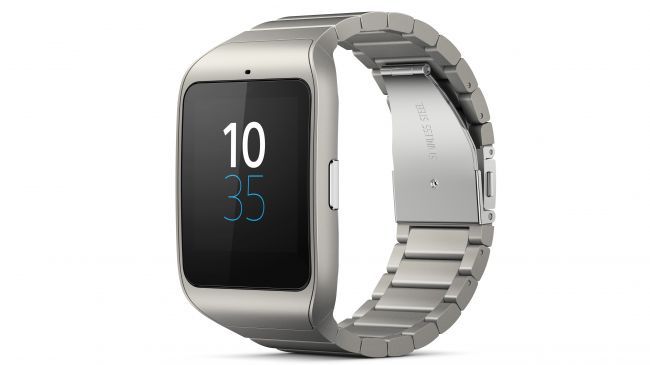
Perhaps not every one of us has been given the opportunity to invent his own device from the Internet of Things series. However, there is no doubt that the concept of the Internet of Things may contradict our notions of confidentiality, as the Internet penetrates the most secret areas of our lives.
At the moment, the technology of the Internet of Things can be called advanced. But the more we understand how it works, what data generates, how this data is stored and used, the more we learn about the potential dangers and benefits that the Internet of Things will bring us.

You wake up in the morning, and the sleeping bracelet on your wrist has already recorded how you slept, and uploaded the data to Twitter. The coffee machine received data from Twitter that you woke up and began to brew a morning cup of strong drink for you.
Guided by the data of the same bracelet, the lighting turned on in your bedroom, and a towel began to heat up in the bathroom. When you walked from the bedroom to the kitchen, lamps turned on and off everywhere automatically. A cup of coffee was waiting for you in the kitchen. When you left the house and went to work, a robot vacuum cleaner turned on in the apartment and started cleaning the room, transmitting information about the cleaning process to your phone.
Welcome to a world based on the concept of the Internet of Things. Into a world whose image was largely predetermined by the largest technology companies. In a world that promises to change our lifestyle.
What is the Internet of things?

What is the Internet of Things? As a rule, this term means a combination of inexpensive, energy-efficient processors and physical electronic sensors that integrate into various electrical devices and “communicate” with each other through wireless communication standards.
Electronic sensors can measure absolutely everything, starting from temperature and humidity, and up to pressure, distance, sound strength, light level, gravity, motion, response. Further, all recorded readings by means of installed software can be processed and transmitted over the Internet to other devices.
At the last international consumer electronics fair in Los Angeles, the topic of the Internet of Things was in the limelight. The exhibition was attended by a large number of large and small companies, which over the next year intend to bring to the market a wide variety of devices connected to the Internet. For example, Dyson announced the release this year of a new robot vacuum cleaner called the 360 Eye with a panoramic lens and the ability to control from the phone. Equipped with a Wi-Fi module and created on the basis of the patented Cyclone technology, the vacuum cleaner will be able to send cleaning data to the user's phone.
And how do you like the idea of a coffee machine, the operation of which you can control using the application for a mobile phone? The Danish company Scanomat has developed a stylish TopBrewer machine that allows you to select the type of coffee using an Android or iOS application. If you intend to visit Copenhagen, be sure to check out the TopBrewer Café, which never has a queue, because coffee is ordered and paid using your mobile phone.
Technology accessibility

The rapid development of the Internet of Things was due to the continued cost-cutting of technology. Over the past couple of years, we have been continuously observing how the cost of a wide variety of devices is reduced, from 3D printers to smart watches. The cost of the Bluetooth module, which provides wireless connection of devices using the corresponding protocol, has sharply decreased. Today on eBay you can find a Bluetooth adapter that costs less than 70 cents.
Photo sensors built into fitness bracelets and allowing you to determine the pulse cost about 50 cents, and green LEDs are sold at one cent apiece. However, the cost of computing power fell most significantly, which allowed us to embed computer chips in almost every device.
Do-it-yourself devices

Unlike other technological revolutions, the latter so lowered the cost of components that it led to the elimination of traditional barriers to the introduction of new products and companies on the market. At the moment, you only need to understand what the technology of the Internet of Things is, that is, to understand the principles of operation of sensors, processors, wireless networks, cloud computing environments, which form the basis of IW, and have a good idea.
An idea alone will not bring you millions. However, thanks to sites offering direct financing for projects (the so-called crowdfunding), such as Kickstarter and indiegogo, innovations in the Internet of Things can be developed both through the efforts of the technical community and with the participation of rich and influential companies (an example is the LIFX project).
At the end of 2013, Intel’s largest computer chip company entered the DIY market with its first breadboard called Galileo. The Galileo board is equipped with a 32-MHz single-core processor with a clock frequency of 400 MHz, which is called Quark X1000 and is designed specifically for the development of projects in the field of the Internet of Things.
In order to promote the product on the market, Intel planned in 2014 to donate 50,000 boards to various universities around the world. Since then, the company managed to bring to market Galileo 2 board and super thin Edison boards.
$ 3 Wi-Fi Solution

A huge step forward in the field of Wi-Fi technologies was the creation of a tiny chip ESP8266, which was released by the Chinese company Espressif Systems. The peculiarity of this chip is that it contains such a set of elements that will allow you to build a full-fledged Wi-Fi network. At the same time, the module itself costs only 2-3 dollars.
Compared to the cost of Wi-Fi modules of the previous generation, these are mere pennies. At the same time, the ESP8266 continues to support 802.11b / g / n standards at a frequency of 2.4 GHz, i.e. The standards used by your phones and tablets. If you read what this small chip is capable of, you will realize that it really made it possible to revolutionize people's ideas about how and where to deploy a Wi-Fi network. Built-in improved encryption standard, no need for external components or factory settings - it is obvious that all this explains the popularity of the solution among developers.
Not so long ago, the chip was certified by the State Committee on Television, Radio Broadcasting and Communications of the United States. Now that the biggest barrier has been overcome, nothing can prevent the use of this chip on an industrial scale. Already, you can buy an ESP8266 Wi-Fi module on eBay for about $ 3 and use it in conjunction with Arduino-based microprocessor boards to implement your projects.
Bluetooth module HC-06

Despite the fact that the ESP8266 module, without a doubt, gave impetus to the development of a whole range of new cheap devices that are directly connected to the Internet, the most common wireless connection is still a Bluetooth-based connection. In particular, the Bluetooth module is used to create various kinds of wearable devices, for example, fitness bracelets, which are abundant in the market.
HC-06 type bluetooth modules are now sold for about $ 4 and they work like a wireless serial port. You can connect the module to any home device. Like standard devices that support Bluetooth technology, the HC-06 module can communicate with any Android or iOS phone or tablet for data transfer.
$ 32 32-bit processor

Another novelty on the market is a tiny breadboard equipped with an 72MHz energy-efficient 32-bit STM32F103 ARM Cortex M3 microprocessor, which should become a direct competitor to Intel products. ARM is behind the processor of every iPhone and iPad, as well as 98% of Android devices, due to the incredible popularity of the Cortex A-series
processors . The Cortex M3 processor is often used in smartphones to perform secondary tasks. But it can be used for a number of other needs. While Intel Galileo sells for around $ 74, the tiny STM32F103 is available in online stores for only $ 4.
Open standards

The rapid development of the Internet of Things is starting to face the same problems that hit the revolution in personal computer development in the 1980s. Currently, the problem is not how to bring the product to the market, but how to develop appropriate standards, without which various devices will be just a pile of trash, unable to "communicate" with each other.
A thorough examination requires everything from hardware compatibility to the way data is stored in cloud storage. And before progress goes too far, the market needs to develop appropriate standards.
Number of Standards
Qualcomm is one of the leaders in the market for the production of processors for phones and tablets. It produces Snapdragon chips based on the ARM architecture, which are used in devices such as the Samsung Galaxy S5. The company is also a major player in the Internet of Things market, having once started developing the AllJoyn protocol, which served as the basis for the creation of the AllSeen Alliance.
The alliance was formed in 2013 and already then received the support of major manufacturers of household appliances, such as Electrolux, and also connected Microsoft, LG, Panasonic, Sony, and the industrial giant Bosch to the promotion of the platform. However, soon competing alliances formed other companies wishing to promote their solutions.
For example, the Open Interconnect Consortium (OIC) consortium has become a direct competitor to the AllSeen Alliance. The consortium has the same goals as AllSeen, namely, trying to create synchronization standards for devices that form the Internet of Things, but without using Qualcomm’s AllJoyn protocol.
The OIC Consortium was created in 2014 by giants such as Intel, Samsung and Broadcom, a competitor to Qualcomm. However, soon there was a discord between the participants and in October 2014 Broadcom left the OIC. It was reported that such a decision was caused by disagreements on the protection of intellectual property.
Intel’s largest processor company has also set up a separate Intel Internet of Things Solutions Alliance, which is clearly about to take a more comprehensive approach by promoting brands such as Dell, Hewlett-Packard, Fujitsu, Microsoft, and Oracle.
At this stage, neither the AllSeen alliance nor the OIC consortium make any concessions and seem to be going to let the market choose which of the participants will be the winner. Perhaps we are expecting a repeat of the battle of the 'VHS vs Betamax' standards that broke out on the market in the mid-80s. As they say, all new is well forgotten old ...
Internet of Things in numbers

Perhaps for some, the problem of standards may seem like a storm in a glass of water, however, there are many reasons why you need to create and select the best standards as quickly as possible. According to research conducted by Gartner, this year the number of devices and appliances connected to the network will reach 4.9 billion units. By 2020, this figure will increase to 25 billion.
According to forecasts in the near future, the market for the production of products and services related to the field of the Internet of Things will reach $ 263 billion. Gartner’s vice president, Jim Tully, said the whirlwind of cloud, mobile, social and information technology, what he called the Circle of Forces, left most companies with no choice but to turn to the Internet of Things.
In December 2013, Gartner named the manufacturing, healthcare and insurance industries as pioneers in the field of Internet of Things technologies. Manufacturing companies are combining the technologies of the Internet of Things with existing technologies, such as LED lighting and heating, ventilation and air conditioning technologies, when designing new “smart homes”. Healthcare companies have used low-cost sensors to drive demand for fitness bracelets.
What certainly can surprise a layman is the use of Internet of Things technologies in the insurance industry. Gartner predicts that insurance agencies may start offering special policies to analyze real-time driving data from a car connected to the network.
Undoubtedly, the user may have a question whether it turns out that the same data can lead to the fact that some motorists will pay more than others if their data are classified as “high risk”. Be that as it may, a car connected to the network is already a reality. Gartner predicts that the number of car devices connected to the Internet by the end of the year will reach 372 million.
On the issue of privacy
US privacy experts and US government officials are concerned about the ubiquity of the Internet of Things. In various TV shows, the theme of drones with cameras flying over the heads of citizens, and peering into their houses and front gardens, is constantly being addressed. However, low-cost Internet of Things technologies can lead to an even more aggressive intrusion of home appliances connected to the network into the privacy of citizens.
The chairman of the US Federal Trade Commission, Edith Ramirez, has already begun to sound the bells. The Los Angeles Consumer Electronics Show earlier this year kicked off with a welcoming speech by Samsung Head of Samsung Consumer Electronics, Mr. Jun, who outlined the bright future for the Internet of Things and Cloud. At the same time, it was announced that all new Samsung TVs will become part of the Internet of Things by 2017.
But while at the exhibition most of those present were staring at the devices connected to the network, Ramirez made her own speech. First, she talked about the benefits that the Internet of Things’s concept would bring to global healthcare and economic growth, and then shared her doubts about “ubiquitous data collection,” “the threat of unauthorized use of consumer data that could have negative consequences,” and “an increased security risk.” ".
Ramirez says: "Devices connected to the network, in fact, allow companies to monitor our lives, which with such an intervention cannot be called personal."
She is also concerned about the unforeseen consequences of data collection. Therefore, she asks whether the habits of people using TV can affect, for example, their future employment. Ultimately, devices from the world of the Internet of Things can simply be hacked because they are connected to the Internet.
In essence, Ramirez urges companies working in the Internet of Things not to ignore issues related to the security and privacy of consumers. However, we still have to see whether the Federal Trade Commission and other state agencies will continue to adhere to this opinion.
Data analysis
It should not surprise anyone that in the future, the use of Internet of Things technologies will affect all areas of our lives. For example, the huge flow of data that will result from the widespread use of devices connected to the network will lead to a demand for experts in the field of data analysis, which will require the early involvement of the education sector.
The demand for knowledge in data analysis will force universities around the world to expand their educational programs. For example, in Australia, Sydney University of Technology this year is launching two new biennial Masters programs in data processing and analysis and in innovation. At the same time, Monash University, starting in 2016, will offer applicants to receive a bachelor's degree in computer science in data analysis. The Royal Melbourne Institute of Technology is already offering a master's degree in data analysis.
Forewarned is forearmed

Perhaps not every one of us has been given the opportunity to invent his own device from the Internet of Things series. However, there is no doubt that the concept of the Internet of Things may contradict our notions of confidentiality, as the Internet penetrates the most secret areas of our lives.
At the moment, the technology of the Internet of Things can be called advanced. But the more we understand how it works, what data generates, how this data is stored and used, the more we learn about the potential dangers and benefits that the Internet of Things will bring us.
